
FLOURISHING FOLK CULTURE 

INHERITANCE OF INTANGIBLE CULTURAL HERITAGE 

RURAL CULTURAL AUDITORIUMS 

BUILDING FAMILY VALUES IN RURAL AREAS 

CULTURAL CREATIVITY 

RURAL CULTURE AND TOURISM 
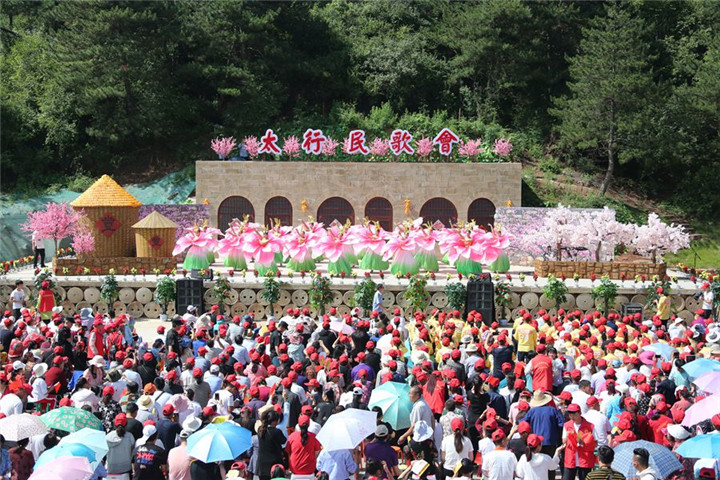
The Second Taihang Folk Music Concert is staged in the Hongdu folk music village of Zuoquan county, Shanxi province, on June 27, 2018. [Photo/sxjzxww.com]


Flourishing folk culture
Zuoquan folk music originated in the Song Dynasty (960-1279). In 2016, the State Council placed it on the list of national intangible cultural heritage. Zuoquan county has set up a music protection center to promote, preserve and develop Zuoquan folk music as an important intangible cultural heritage.
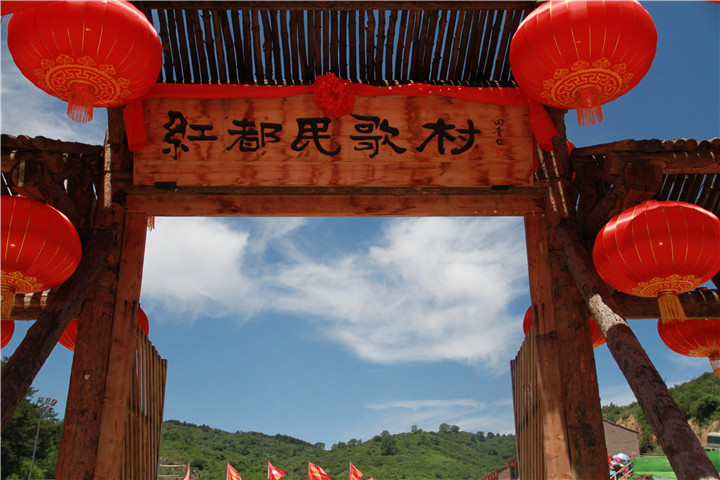
The entrance to the Hongdu folk music village of Zuoquan county, Shanxi province. Photo taken on June 27, 2018. [Photo/sxjzxww.com]


Flourishing folk culture
Zuoquan folk music originated in the Song Dynasty (960-1279). In 2016, the State Council placed it on the list of national intangible cultural heritage. Zuoquan county has set up a music protection center to promote, preserve and develop Zuoquan folk music as an important intangible cultural heritage.
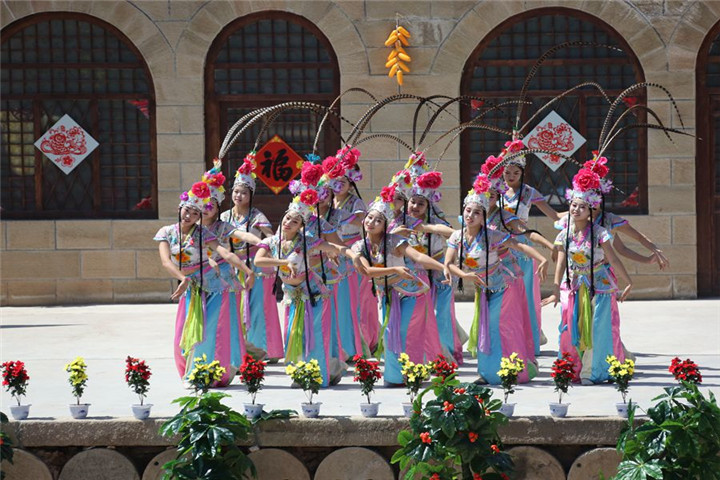
A group of singers and dancers perform a Zuoquan folk song at the Second Taihang Folk Music Concert on June 27, 2018. [Photo/sxjzxww.com]


Flourishing folk culture
Zuoquan folk music originated in the Song Dynasty (960-1279). In 2016, the State Council placed it on the list of national intangible cultural heritage. Zuoquan county has set up a music protection center to promote, preserve and develop Zuoquan folk music as an important intangible cultural heritage.
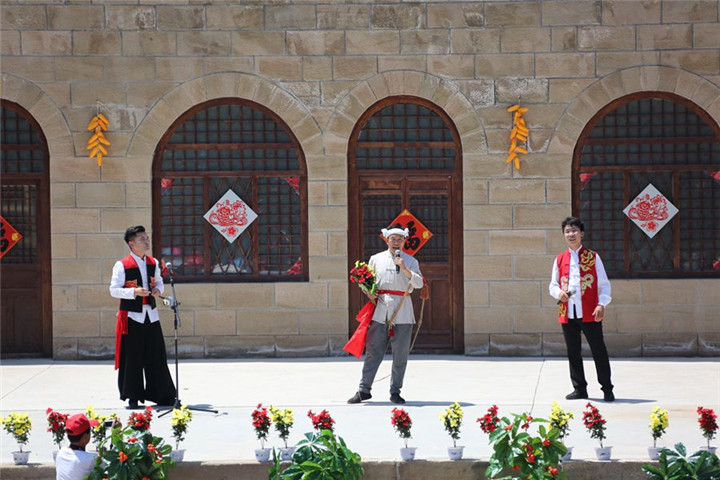
Three singers perform a Zuoquan folk song at the Second Taihang Folk Music Concert on June 27, 2018. [Photo/sxjzxww.com]


Flourishing folk culture
Zuoquan folk music originated in the Song Dynasty (960-1279). In 2016, the State Council placed it on the list of national intangible cultural heritage. Zuoquan county has set up a music protection center to promote, preserve and develop Zuoquan folk music as an important intangible cultural heritage.
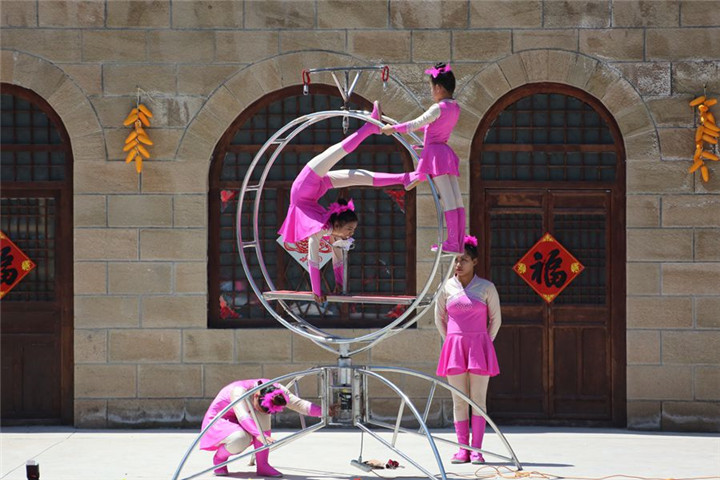
A troupe of female acrobats performs at the Second Taihang Folk Music Concert in Zuoquan county on June 27, 2018. [Photo/sxjzxww.com]


Flourishing folk culture
Zuoquan folk music originated in the Song Dynasty (960-1279). In 2016, the State Council placed it on the list of national intangible cultural heritage. Zuoquan county has set up a music protection center to promote, preserve and develop Zuoquan folk music as an important intangible cultural heritage.
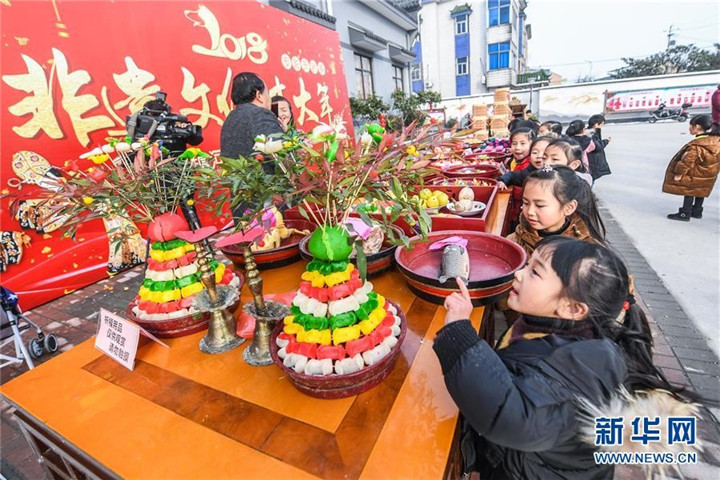
Children line up for a look at the traditional rice sculptures in Hexidai village, Zhejiang province, on Feb. 1, 2018. [Photo/Xinhua]


Inheritance of intangible cultural heritage
Hexidai village in Zhejiang province held a series of activities to display the local intangible cultural heritage during this year's Spring Festival holiday, in order to help local people to appreciate the folk customs.
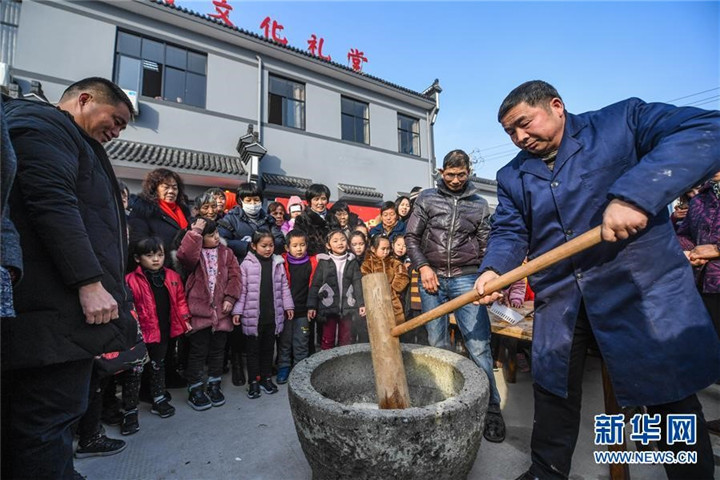
A crowd gathers around a demonstration of traditional rice cake making in Hexidai village, Zhejiang province, on Feb. 1, 2018. [Photo/Xinhua]


Inheritance of intangible cultural heritage
Hexidai village in Zhejiang province held a series of activities to display the local intangible cultural heritage during this year's Spring Festival holiday, in order to help local people to appreciate the folk customs.
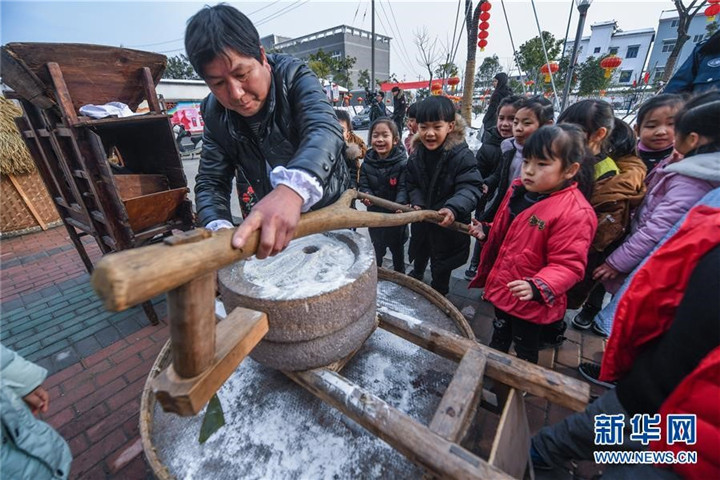
Children try their hand at traditional wheat grinding using a stone mill in Hexidai village, Zhejiang province, on Feb. 1, 2018. [Photo/Xinhua]


Inheritance of intangible cultural heritage
Hexidai village in Zhejiang province held a series of activities to display the local intangible cultural heritage during this year's Spring Festival holiday, in order to help local people to appreciate the folk customs.
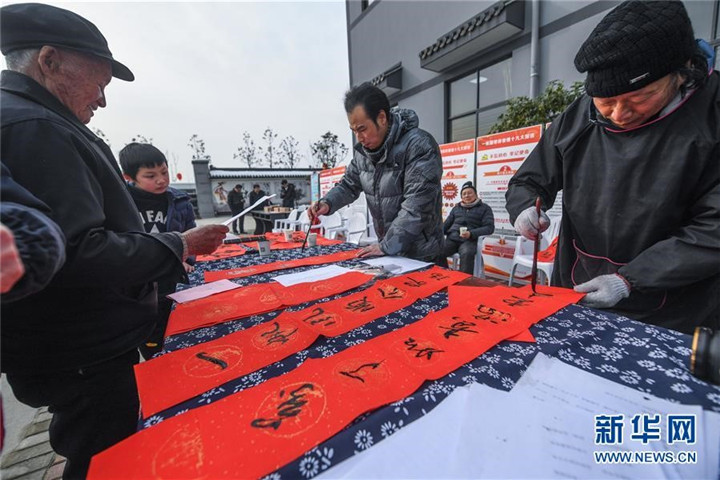
Local calligraphy lovers write Spring Festival couplets for the villagers in Hexidai village, Zhejiang province, on Feb. 1, 2018. [Photo/Xinhua]


Inheritance of intangible cultural heritage
Hexidai village in Zhejiang province held a series of activities to display the local intangible cultural heritage during this year's Spring Festival holiday, in order to help local people to appreciate the folk customs.
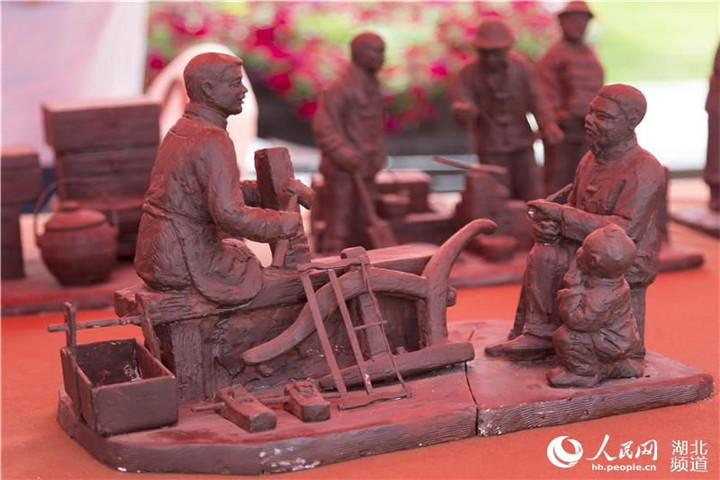
Huangpi clay figurines on display at the cultural heritage exhibition. [Photo/hb.people.cn]


Inheritance of intangible cultural heritage
In a bid to promote the vitalization of rural areas, a cultural heritage exhibition was held in Magnolia Flower village, Huangpi district, Hubei province, on June 8, 2018. Nineteen intangible culture heritage inheritors displayed their artworks, attracting a large number of tourists.
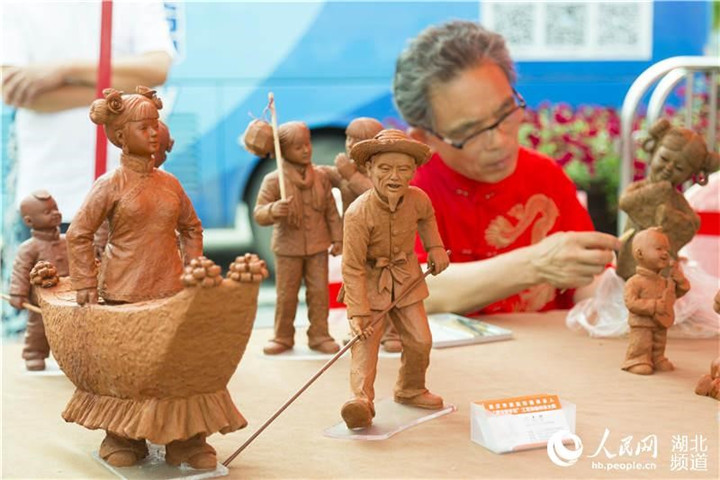
A craftsman works on a Huangpi clay figurine at the cultural heritage exhibition. [Photo/hb.people.cn]


Inheritance of intangible cultural heritage
In a bid to promote the vitalization of rural areas, a cultural heritage exhibition was held in Magnolia Flower village, Huangpi district, Hubei province, on June 8, 2018. Nineteen intangible culture heritage inheritors displayed their artworks, attracting a large number of tourists.
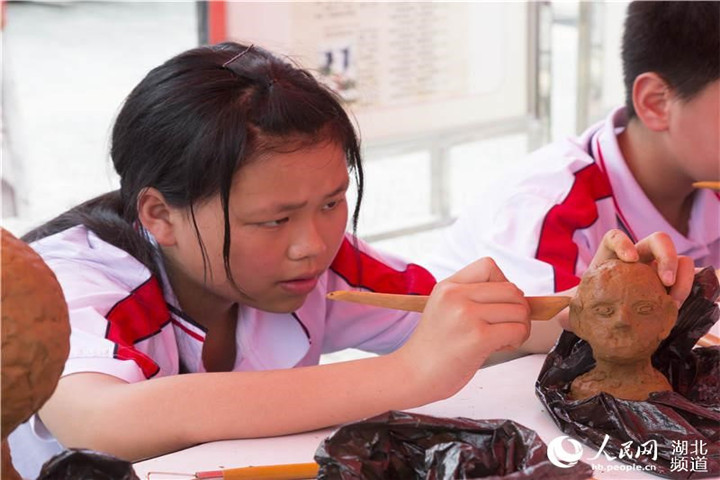
A student learns to sculpt a Huangpi clay figurine. [Photo/hb.people.cn]


Inheritance of intangible cultural heritage
In a bid to promote the vitalization of rural areas, a cultural heritage exhibition was held in Magnolia Flower village, Huangpi district, Hubei province, on June 8, 2018. Nineteen intangible culture heritage inheritors displayed their artworks, attracting a large number of tourists.
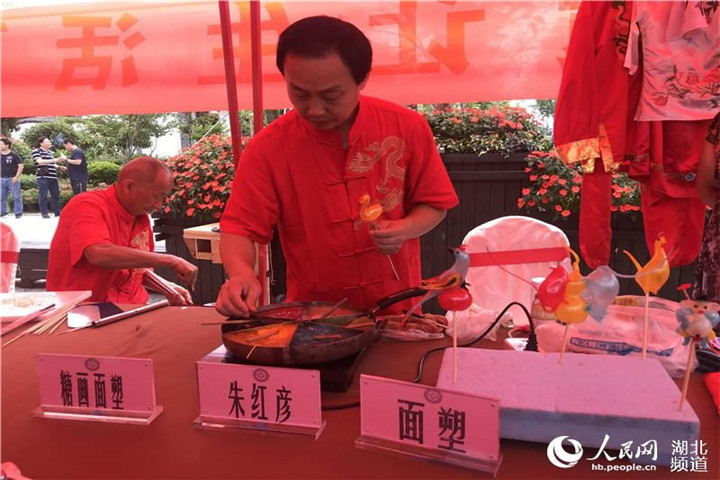
A craftsman is making dough sculptures in different shapes. [Photo/hb.people.cn]


Inheritance of intangible cultural heritage
In a bid to promote the vitalization of rural areas, a cultural heritage exhibition was held in Magnolia Flower village, Huangpi district, Hubei province, on June 8, 2018. Nineteen intangible culture heritage inheritors displayed their artworks, attracting a large number of tourists.
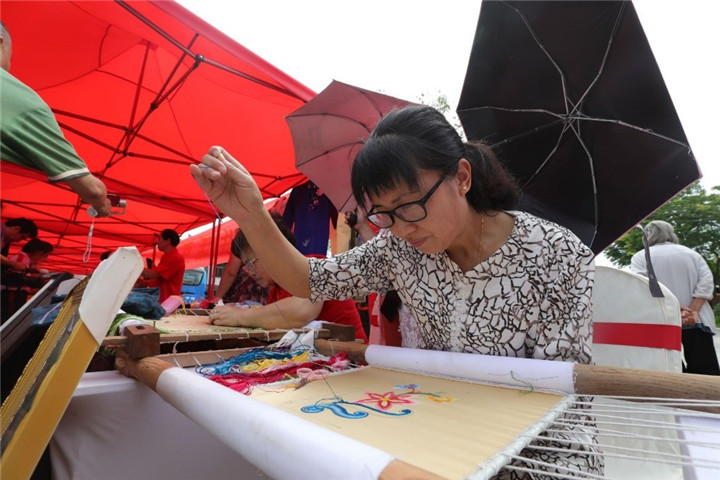
A craftswoman is embroidering in a fashion inherited from the Western Han Dynasty (206 BC-24 AD). [Photo/hb.people.cn]


Inheritance of intangible cultural heritage
In a bid to promote the vitalization of rural areas, a cultural heritage exhibition was held in Magnolia Flower village, Huangpi district, Hubei province, on June 8, 2018. Nineteen intangible culture heritage inheritors displayed their artworks, attracting a large number of tourists.
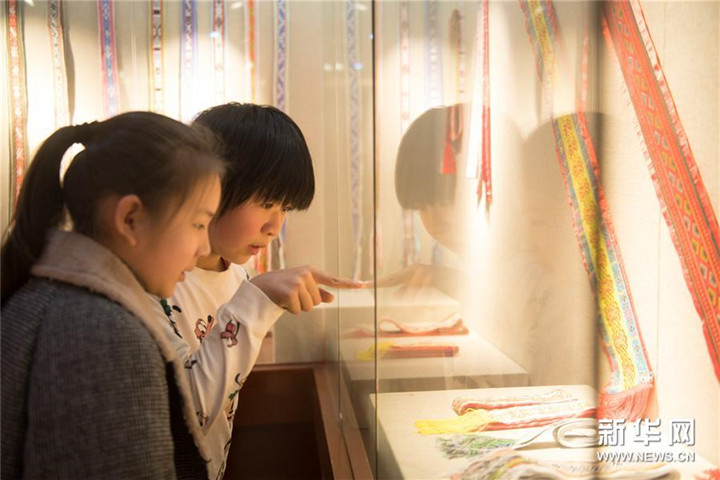
Children take a closer look at the colorful ribbons of the She ethnic group in the cultural auditorium of Gaoqiao village in Jiande city, Zhejiang Province, on March 13, 2018. [Photo/Xinhua]


Rural cultural auditoriums
Since 2017, Jiande city in Zhejiang province has been renovating a number of rural cultural auditoriums, aiming to serve its villages, cultivate morality and exhibit rural cultural products. As of March 2018, Jiande has built and upgraded 38 rural cultural auditoriums to inherit traditional culture and promote cultural industrial development.
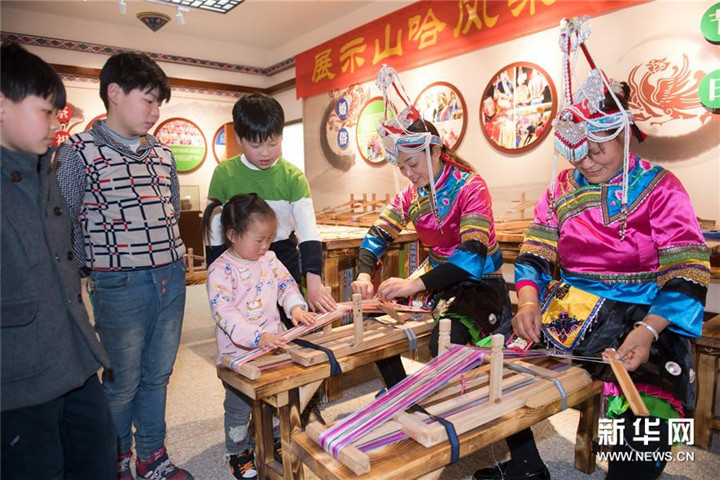
A demonstration of ribbon weaving in the style of the She ethnic group in the cultural auditorium of Gaoqiao village in Jiande city, Zhejiang Province, on March 13, 2018. [Photo/Xinhua]


Rural cultural auditoriums
Since 2017, Jiande city in Zhejiang province has been renovating a number of rural cultural auditoriums, aiming to serve its villages, cultivate morality and exhibit rural cultural products. As of March 2018, Jiande has built and upgraded 38 rural cultural auditoriums to inherit traditional culture and promote cultural industrial development.
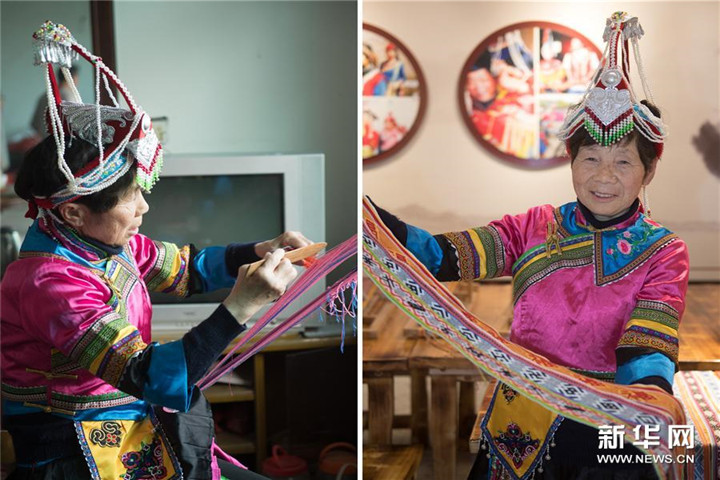
Lei Guoxiang, an inheritor of intangible cultural heritage, weaves colorful ribbons of the She ethnic group at home (L), and shows off the finished product at the cultural auditorium of Gaoqiao village in Jiande city, Zhejiang province, on March 13, 2018. [Photo/Xinhua]


Rural cultural auditoriums
Since 2017, Jiande city in Zhejiang province has been renovating a number of rural cultural auditoriums, aiming to serve its villages, cultivate morality and exhibit rural cultural products. As of March 2018, Jiande has built and upgraded 38 rural cultural auditoriums to inherit traditional culture and promote cultural industrial development.
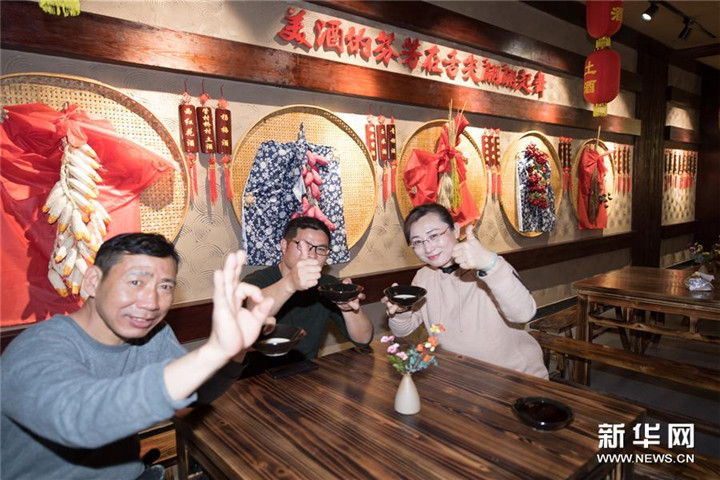
Tourists taste local wine at the cultural auditorium of Guancunqiao village in Jiande city, Zhejiang province, on March 13, 2018. [Photo/Xinhua]


Rural cultural auditoriums
Since 2017, Jiande city in Zhejiang province has been renovating a number of rural cultural auditoriums, aiming to serve its villages, cultivate morality and exhibit rural cultural products. As of March 2018, Jiande has built and upgraded 38 rural cultural auditoriums to inherit traditional culture and promote cultural industrial development.
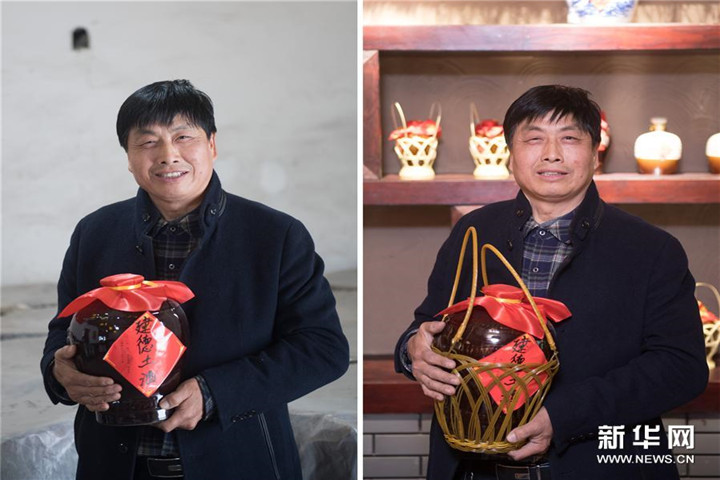
Wu Chungen proudly shows off his home-made rice wine in his distillery (L) and at the cultural auditorium of Guancunqiao village in Jiande city, Zhejiang province, on March 13, 2018. [Photo/Xinhua]


Rural cultural auditoriums
Since 2017, Jiande city in Zhejiang province has been renovating a number of rural cultural auditoriums, aiming to serve its villages, cultivate morality and exhibit rural cultural products. As of March 2018, Jiande has built and upgraded 38 rural cultural auditoriums to inherit traditional culture and promote cultural industrial development.
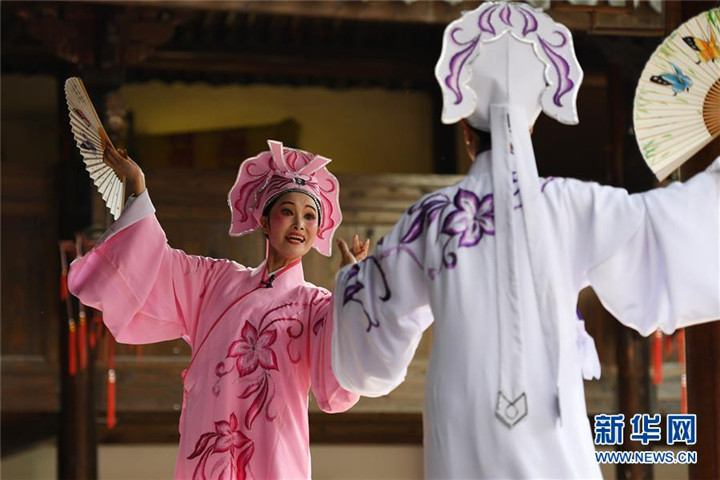
A performance of the classic Shaoxing Opera "The Butterfly Lovers" at the cultural auditorium of Jinzhulingjiao village in Xianju county, Zhejiang province, on Sept. 13, 2017. [Photo/Xinhua]


Rural cultural auditoriums
Xianju county in Zhejiang province has put in much work in recent years to improve local cultural services. In 2017, the county offered subsidies for rural cultural auditoriums to open to the public for free.
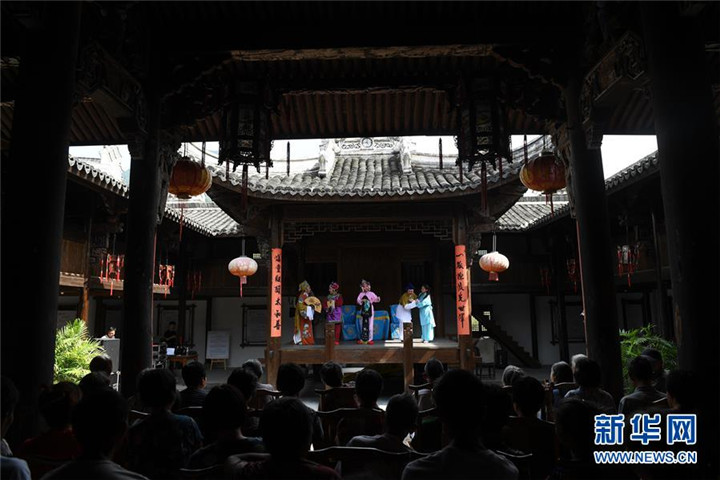
The cultural auditorium of Jinzhulingjiao village is packed with audience for an opera performance on Sept. 13, 2017. [Photo/Xinhua]


Rural cultural auditoriums
Xianju county in Zhejiang province has put in much work in recent years to improve local cultural services. In 2017, the county offered subsidies for rural cultural auditoriums to open to the public for free.
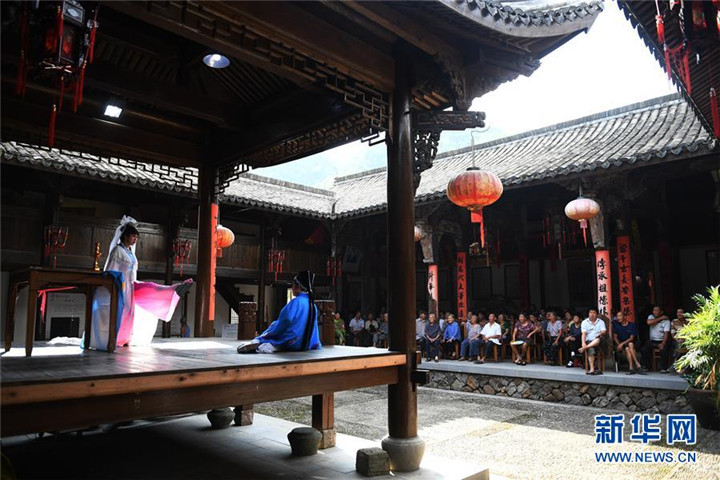
Actors perform Shaoxing Opera in front of a packed audience at the cultural auditorium of Jinzhulingjiao village in Xianju county, Zhejiang province, on Sept. 13, 2017. [Photo/Xinhua]


Rural cultural auditoriums
Xianju county in Zhejiang province has put in much work in recent years to improve local cultural services. In 2017, the county offered subsidies for rural cultural auditoriums to open to the public for free.
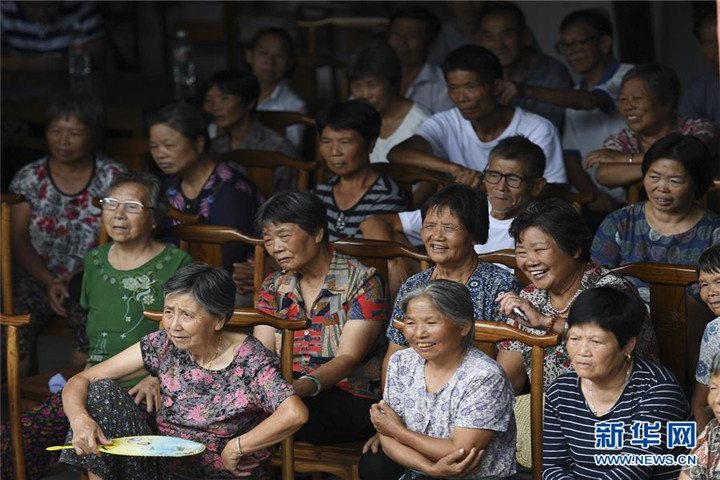
Local residents enjoy an opera performance at the cultural auditorium of Jinzhulingjiao village in Xianju county, Zhejiang province, on Sept. 13, 2017. [Photo/Xinhua]


Rural cultural auditoriums
Xianju county in Zhejiang province has put in much work in recent years to improve local cultural services. In 2017, the county offered subsidies for rural cultural auditoriums to open to the public for free.
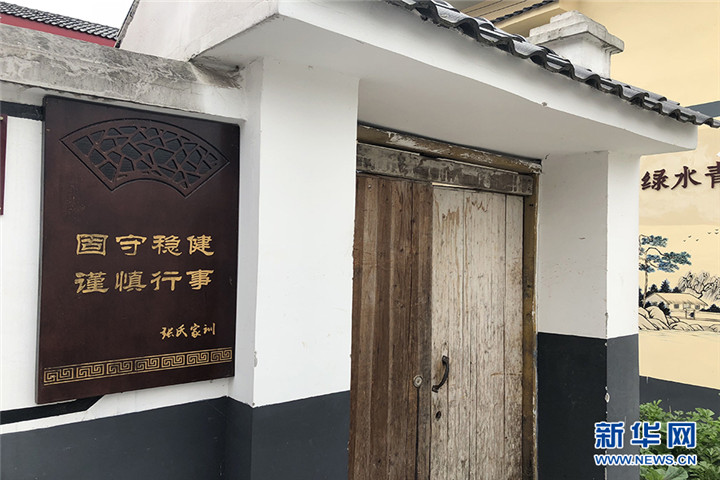
A plaque of the family motto hangs on the wall in front of a house in Zhenwugong village of Chongqing on April 18, 2018. [Photo/Xinhua]


Building family values in rural areas
Family values have been extremely influential on individual behaviors in China since ancient times. In some villages, family mottos are hung on the wall, and many wall paintings display traditional moral stories, both helping to establish a code of conduct in the home and throughout the villages.
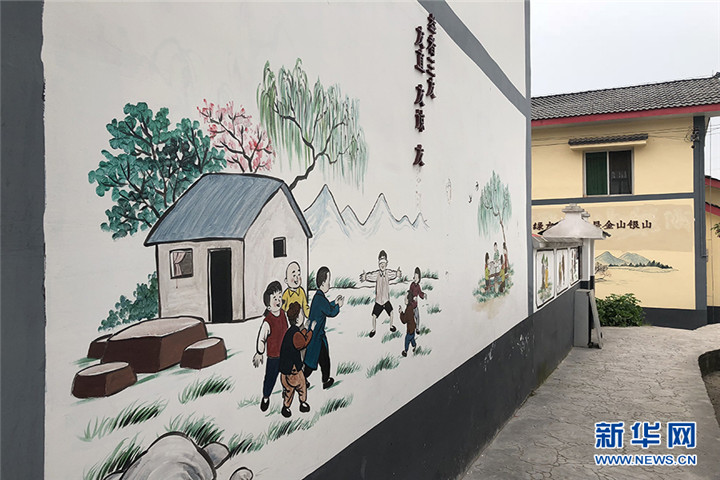
A traditional moral story is drawn on the wall to promote good manners in Zhenwugong village of Chongqing on April 18, 2018. [Photo/Xinhua]


Building family values in rural areas
Family values have been extremely influential on individual behaviors in China since ancient times. In some villages, family mottos are hung on the wall, and many wall paintings display traditional moral stories, both helping to establish a code of conduct in the home and throughout the villages.
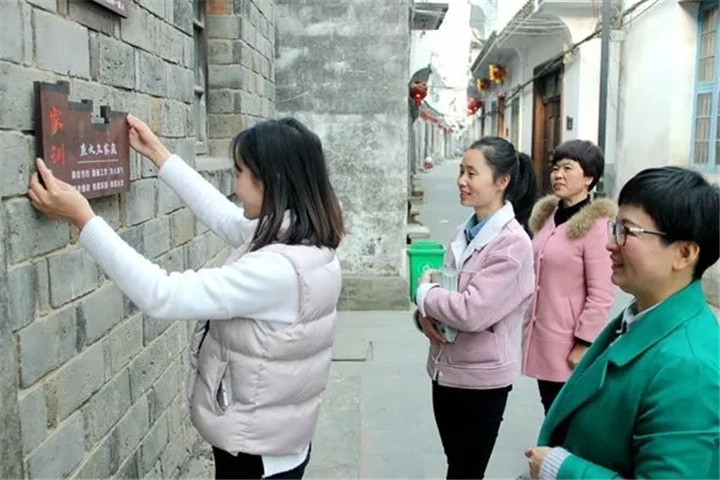
A woman hangs a plaque of her family motto on the wall in Wangkou village of Wuyuan county, Jiangxi province. In Wuyuan county, more than 80,000 families are displaying their family mottos to help conduct behaviors and carry on traditional Chinese virtues. [Photo/jxwmw.cn]


Building family values in rural areas
Family values have been extremely influential on individual behaviors in China since ancient times. In some villages, family mottos are hung on the wall, and many wall paintings display traditional moral stories, both helping to establish a code of conduct in the home and throughout the villages.
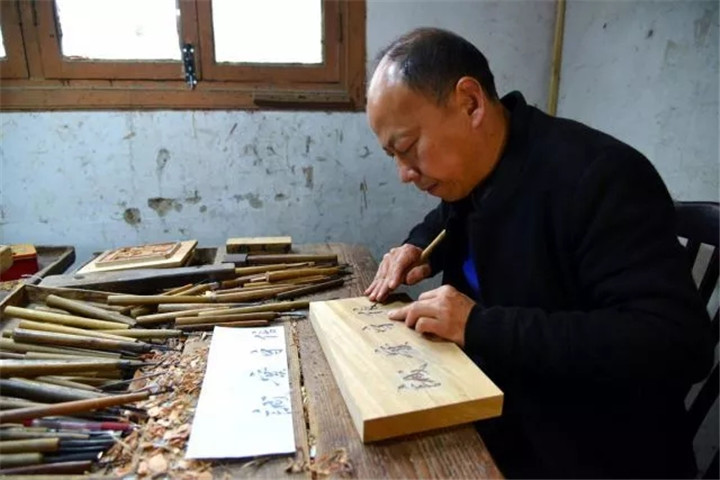
Yu Youhong, an inheritor of national intangible cultural heritage, carves Chinese characters "Honesty and Trustworthiness" on a plaque in Wuyuan county, Jiangxi province. In Wuyuan county, more than 80,000 families are displaying their family mottos to help conduct behaviors and carry on traditional Chinese virtues. [Photo/jxwmw.cn]


Building family values in rural areas
Family values have been extremely influential on individual behaviors in China since ancient times. In some villages, family mottos are hung on the wall, and many wall paintings display traditional moral stories, both helping to establish a code of conduct in the home and throughout the villages.
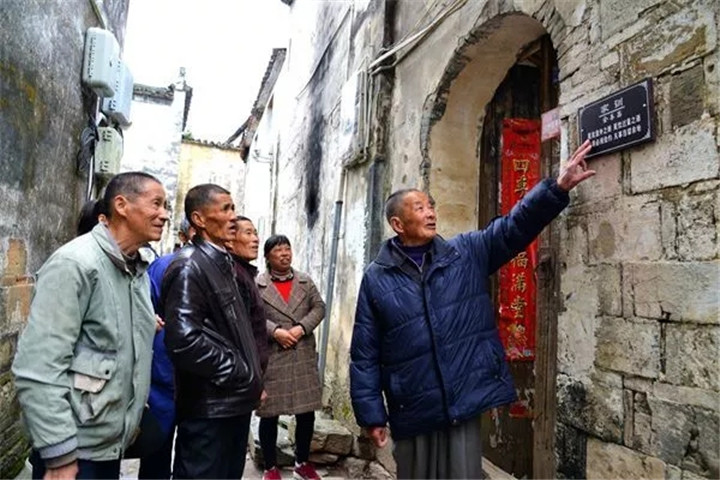
Jin Shanchang, from Yancun village, Jiangxi province, introduces his family motto to his neighbors. In Wuyuan county, more than 80,000 families are displaying their family mottos to help conduct behaviors and carry on traditional Chinese virtues. [Photo/jxwmw.cn]


Building family values in rural areas
Family values have been extremely influential on individual behaviors in China since ancient times. In some villages, family mottos are hung on the wall, and many wall paintings display traditional moral stories, both helping to establish a code of conduct in the home and throughout the villages.
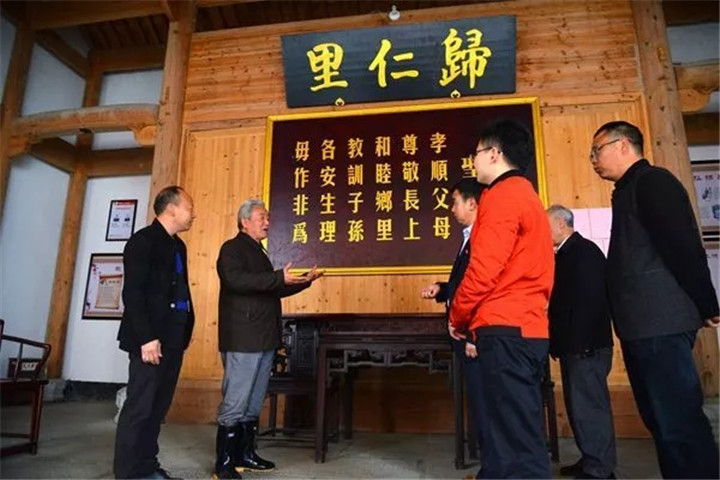
Jin Shanchang, from Yancun village, Jiangxi province, introduces his family motto to his neighbors. In Wuyuan county, more than 80,000 families are displaying their family mottos to help conduct behaviors and carry on traditional Chinese virtues. [Photo/jxwmw.cn]


Building family values in rural areas
Family values have been extremely influential on individual behaviors in China since ancient times. In some villages, family mottos are hung on the wall, and many wall paintings display traditional moral stories, both helping to establish a code of conduct in the home and throughout the villages.
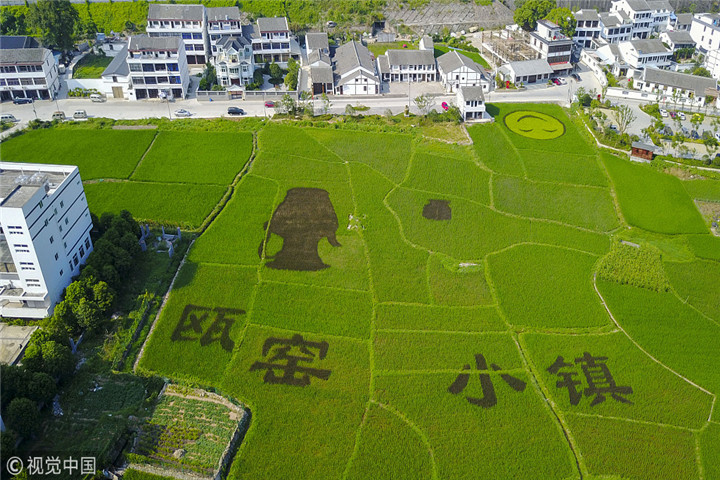
An aerial view of a section of the Wenzhou porcelain town, Zhejiang province. [Photo/VCG]


Cultural creativity
From October 2016, the Wenzhou porcelain town in Zhejiang province started renovation and construction of workshops in order to rebuild and promote its cultural brands. Within two months, the village had torn down shabby buildings within an area of 96,500 square kilometers and established 22 cultural and creative workshops. These workshops produce a large variety of local crafts including Wenzhou porcelain, Wenzhou silk sculpture, and wooden carvings.
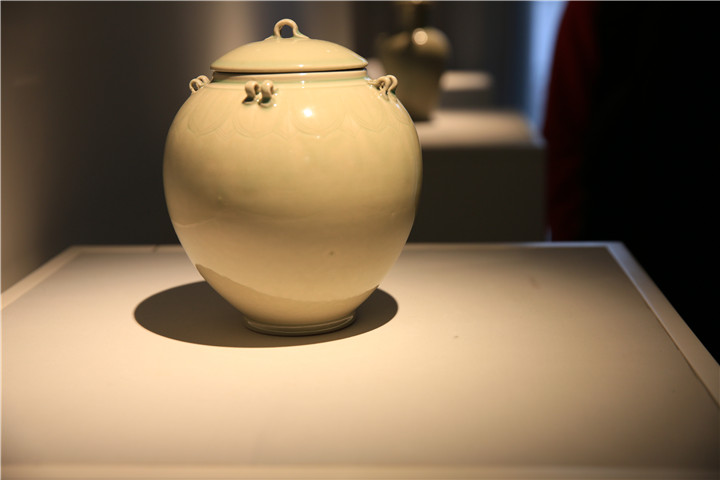
Wenzhou porcelain exhibits at a porcelain workshop of the Wenzhou porcelain town, Zhejiang province, Nov. 17, 2017. [Photo by Gao Zhan/China.org.cn]


Cultural creativity
From October 2016, the Wenzhou porcelain town in Zhejiang province started renovation and construction of workshops in order to rebuild and promote its cultural brands. Within two months, the village had torn down shabby buildings within an area of 96,500 square kilometers and established 22 cultural and creative workshops. These workshops produce a large variety of local crafts including Wenzhou porcelain, Wenzhou silk sculpture, and wooden carvings.
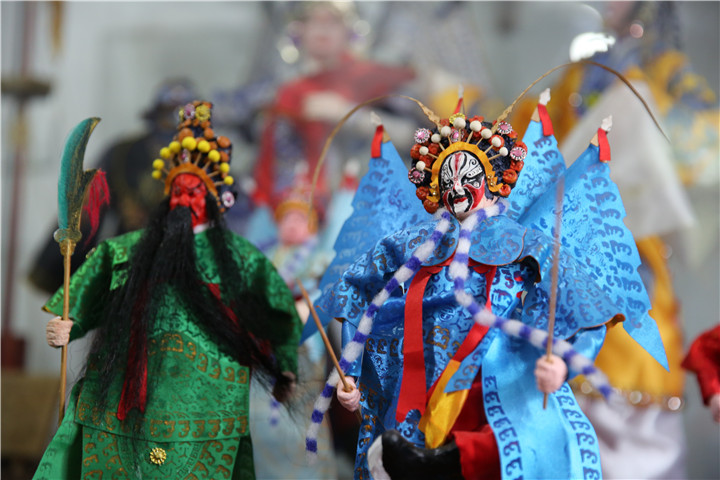
Delicate silk structure made by craftsmen of the Wenzhou porcelain town, Zhejiang province, Nov. 17, 2017. [Photo by Gao Zhan/China.org.cn]


Cultural creativity
From October 2016, the Wenzhou porcelain town in Zhejiang province started renovation and construction of workshops in order to rebuild and promote its cultural brands. Within two months, the village had torn down shabby buildings within an area of 96,500 square kilometers and established 22 cultural and creative workshops. These workshops produce a large variety of local crafts including Wenzhou porcelain, Wenzhou silk sculpture, and wooden carvings.
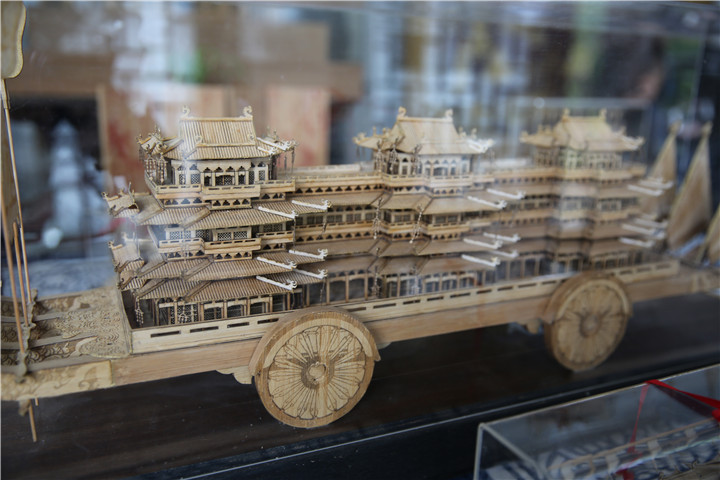
A bamboo carving of ancient buildings in the Wenzhou porcelain town, Zhejiang province. [Photo by Gao Zhan/China.org.cn]


Cultural creativity
From October 2016, the Wenzhou porcelain town in Zhejiang province started renovation and construction of workshops in order to rebuild and promote its cultural brands. Within two months, the village had torn down shabby buildings within an area of 96,500 square kilometers and established 22 cultural and creative workshops. These workshops produce a large variety of local crafts including Wenzhou porcelain, Wenzhou silk sculpture, and wooden carvings.
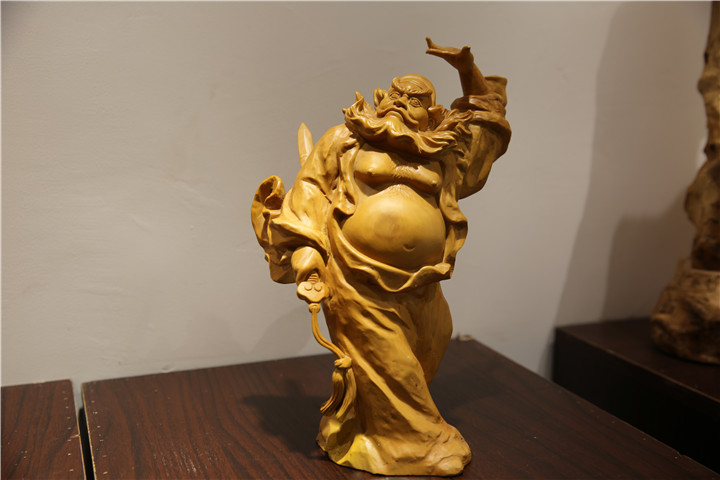
A wood carving exhibits at a workshop of the Wenzhou porcelain town, Zhejiang province, Nov. 17, 2017. [Photo by Gao Zhan/China.org.cn]


Cultural creativity
From October 2016, the Wenzhou porcelain town in Zhejiang province started renovation and construction of workshops in order to rebuild and promote its cultural brands. Within two months, the village had torn down shabby buildings within an area of 96,500 square kilometers and established 22 cultural and creative workshops. These workshops produce a large variety of local crafts including Wenzhou porcelain, Wenzhou silk sculpture, and wooden carvings.
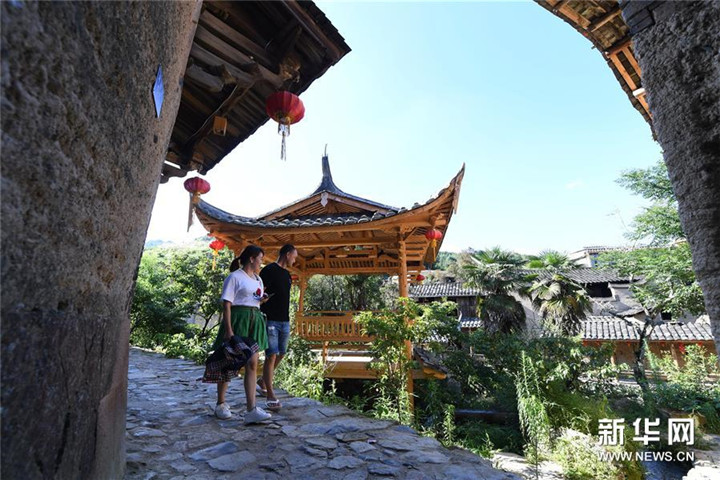
Tourists visit Longtan ancient village in Pingnan county, Fujian province, on June 26, 2018. [Photo/Xinhua]


Cultural creativity
Pingnan county of Fujian province has long attached great importance to the protection of cultural heritage, including Siping Opera and the traditional construction techniques of Chinese wooden arch bridges. More than that, the county has now focused its attention on the protection of traditional ancient villages as well as the development of the farmers' oil painting industry.
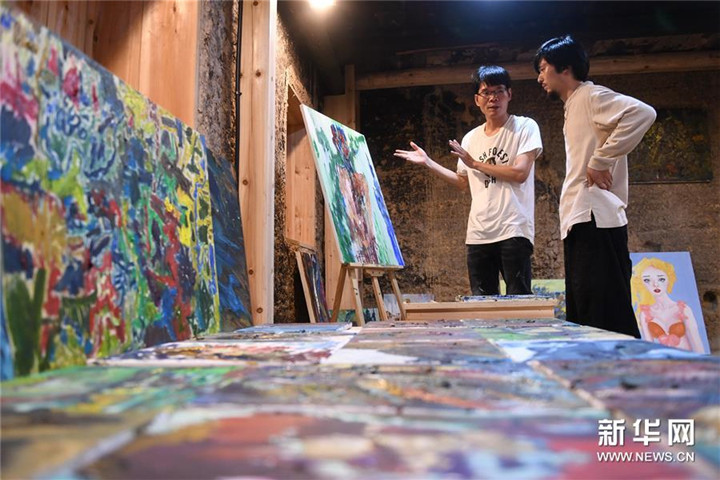
Oil painting instructor Lin Zhenglu (L) gives a few pointers to painters in Jixia village of Pingnan county, Jiangxi province, on June 26, 2018. [Photo/Xinhua]


Cultural creativity
Pingnan county of Fujian province has long attached great importance to the protection of cultural heritage, including Siping Opera and the traditional construction techniques of Chinese wooden arch bridges. More than that, the county has now focused its attention on the protection of traditional ancient villages as well as the development of the farmers' oil painting industry.
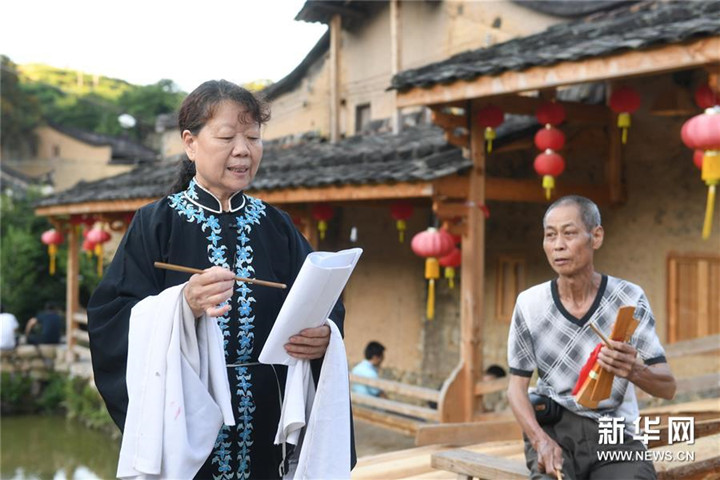
Wei Zhongzhu (L), a performer of Siping Opera in Jixia village of Pingnan county, and Chen Dabing, a national intangible cultural heritage inheritor, perform together on June 26, 2018. [Photo/Xinhua]


Cultural creativity
Pingnan county of Fujian province has long attached great importance to the protection of cultural heritage, including Siping Opera and the traditional construction techniques of Chinese wooden arch bridges. More than that, the county has now focused its attention on the protection of traditional ancient villages as well as the development of the farmers' oil painting industry.
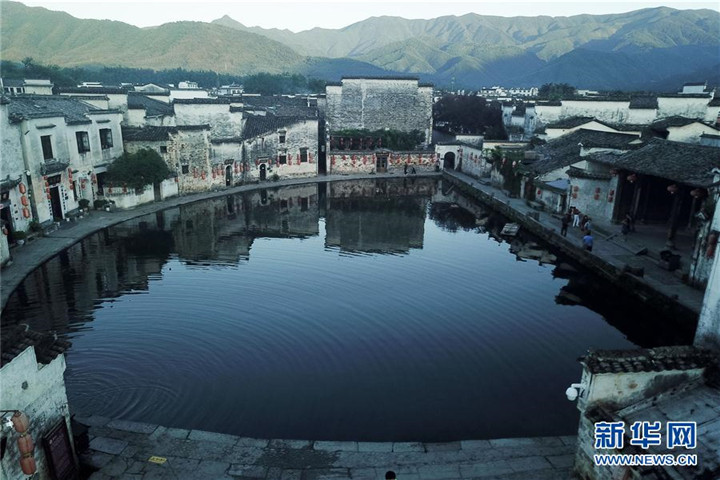
Morning comes to Hongcun village in Huangshan, Anhui province, on Sept. 15, 2017. In early autumn, the picturesque Anhui-style architecture attracted many tourists. [Photo/Xinhua]


Rural culture and tourism
Hongcun village in Huangshan city, Anhui province, was listed as a UNESCO World Heritage Site in 2000. The ancient village has approximately 150 residences whose lineages date back to the Ming and Qing dynasties (1368-1912 AD). Relying on the rich cultural resources, Huangshan city is promoting the integration of culture and tourism, making ancient dwellings, halls, and bridges the building blocks for developing rural tourism. In recent years, Huangshan city has invested more than 9 billion yuan to implement the protection and utilization of ancient buildings, which the city sees as a way to spread the culture of Anhui and a new model for rural tourism.
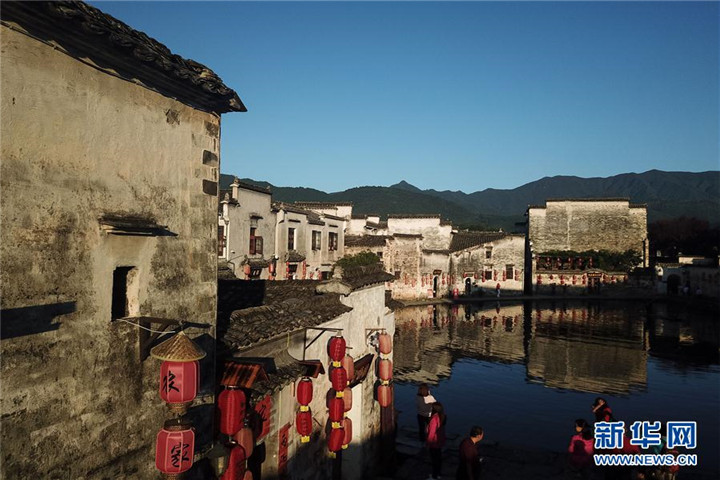
A morning view of Hongcun village in Huangshan, Anhui province, on Sept. 15, 2017. In early autumn, the picturesque Anhui-style architecture attracted many tourists. [Photo/Xinhua]


Rural culture and tourism
Hongcun village in Huangshan city, Anhui province, was listed as a UNESCO World Heritage Site in 2000. The ancient village has approximately 150 residences whose lineages date back to the Ming and Qing dynasties (1368-1912 AD). Relying on the rich cultural resources, Huangshan city is promoting the integration of culture and tourism, making ancient dwellings, halls, and bridges the building blocks for developing rural tourism. In recent years, Huangshan city has invested more than 9 billion yuan to implement the protection and utilization of ancient buildings, which the city sees as a way to spread the culture of Anhui and a new model for rural tourism.
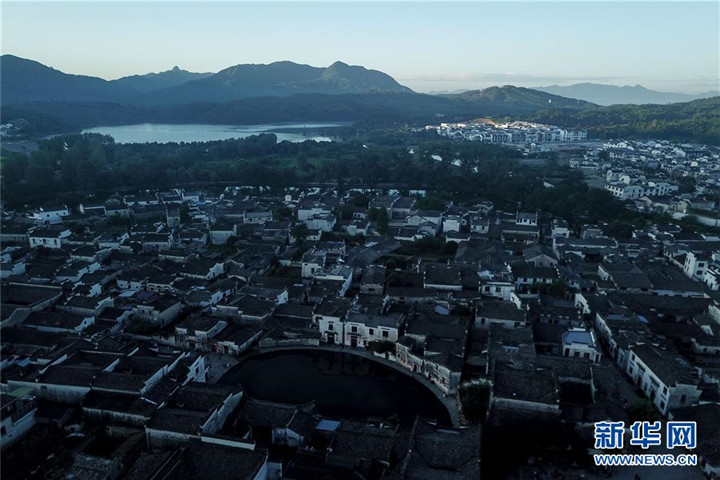
A morning view of Hongcun village in Huangshan, Anhui province, on Sept. 15, 2017. In early autumn, the picturesque Anhui-style architecture attracted many tourists. [Photo/Xinhua]


Rural culture and tourism
Hongcun village in Huangshan city, Anhui province, was listed as a UNESCO World Heritage Site in 2000. The ancient village has approximately 150 residences whose lineages date back to the Ming and Qing dynasties (1368-1912 AD). Relying on the rich cultural resources, Huangshan city is promoting the integration of culture and tourism, making ancient dwellings, halls, and bridges the building blocks for developing rural tourism. In recent years, Huangshan city has invested more than 9 billion yuan to implement the protection and utilization of ancient buildings, which the city sees as a way to spread the culture of Anhui and a new model for rural tourism.
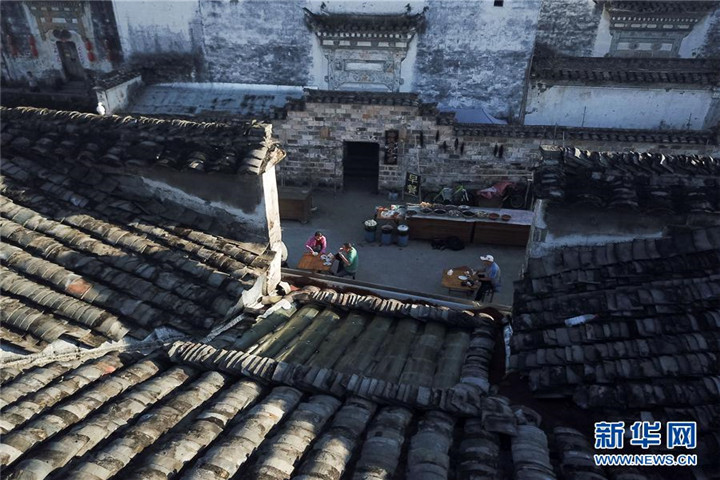
Tourists enjoy breakfast in Hongcun village, Anhui province on Sept. 15, 2017. [Photo/Xinhua]


Rural culture and tourism
Hongcun village in Huangshan city, Anhui province, was listed as a UNESCO World Heritage Site in 2000. The ancient village has approximately 150 residences whose lineages date back to the Ming and Qing dynasties (1368-1912 AD). Relying on the rich cultural resources, Huangshan city is promoting the integration of culture and tourism, making ancient dwellings, halls, and bridges the building blocks for developing rural tourism. In recent years, Huangshan city has invested more than 9 billion yuan to implement the protection and utilization of ancient buildings, which the city sees as a way to spread the culture of Anhui and a new model for rural tourism.
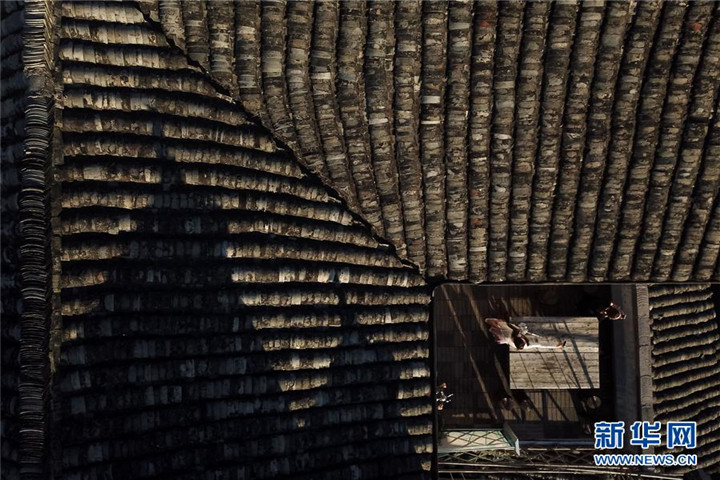
An Anhui-style dwelling in Hongcun village, Anhui Province. Photo taken on Sept. 15, 2017. [Photo/Xinhua]


Rural culture and tourism
Hongcun village in Huangshan city, Anhui province, was listed as a UNESCO World Heritage Site in 2000. The ancient village has approximately 150 residences whose lineages date back to the Ming and Qing dynasties (1368-1912 AD). Relying on the rich cultural resources, Huangshan city is promoting the integration of culture and tourism, making ancient dwellings, halls, and bridges the building blocks for developing rural tourism. In recent years, Huangshan city has invested more than 9 billion yuan to implement the protection and utilization of ancient buildings, which the city sees as a way to spread the culture of Anhui and a new model for rural tourism.
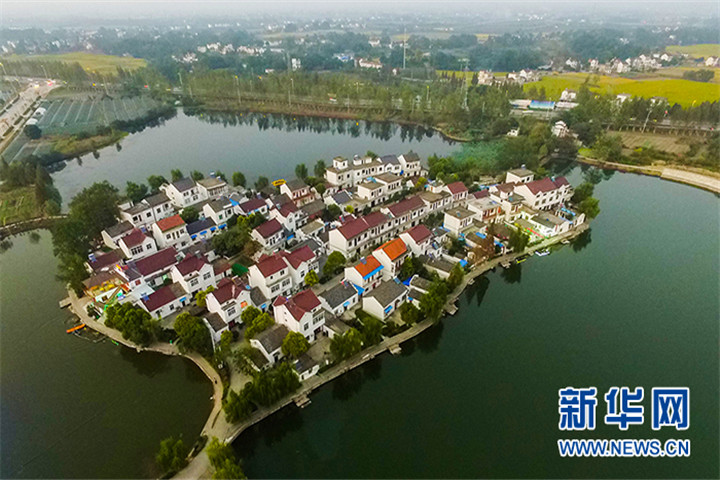
An aerial view of Guanxiang village, Anhui province, on Jan. 21, 2018. [Photo/Xinhua]


Rural culture and tourism
Guanxiang village in Anhui province has transformed its rural tourism development from "building" to "managing" beautiful villages. The village now has developed into a sprawling scenic area that includes two 3A-level scenic spots and 42 modern agricultural enterprises. The area received more than 600,000 visitors in 2017.
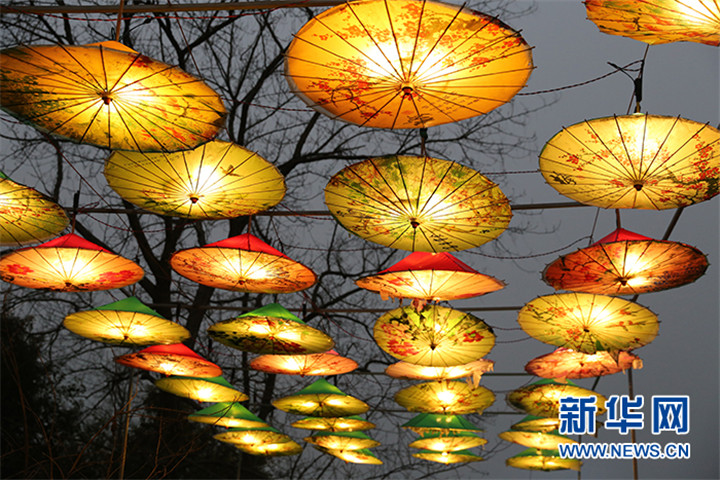
Distinctive lanterns hung between the trees in Guanxiang village, Anhui province. Photo taken on Jan. 21, 2018. [Photo/Xinhua]


Rural culture and tourism
Guanxiang village in Anhui province has transformed its rural tourism development from "building" to "managing" beautiful villages. The village now has developed into a sprawling scenic area that includes two 3A-level scenic spots and 42 modern agricultural enterprises. The area received more than 600,000 visitors in 2017.
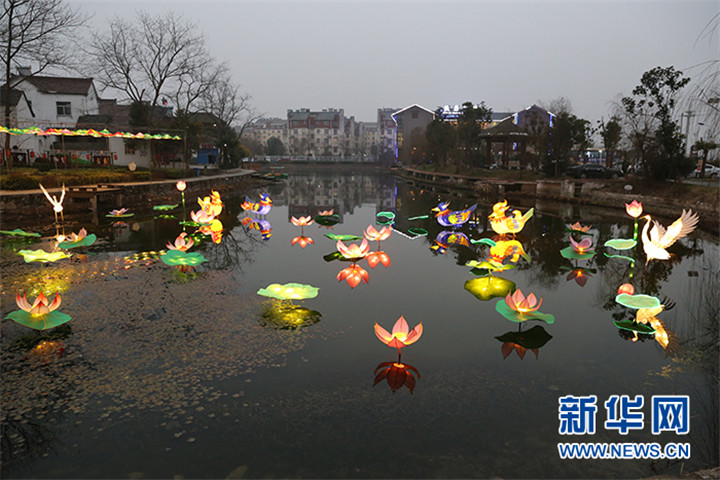
Distinctive lanterns float on the lake of Guanxiang village, Anhui province, on Jan. 21, 2018. [Photo/Xinhua]


Rural culture and tourism
Guanxiang village in Anhui province has transformed its rural tourism development from "building" to "managing" beautiful villages. The village now has developed into a sprawling scenic area that includes two 3A-level scenic spots and 42 modern agricultural enterprises. The area received more than 600,000 visitors in 2017.
